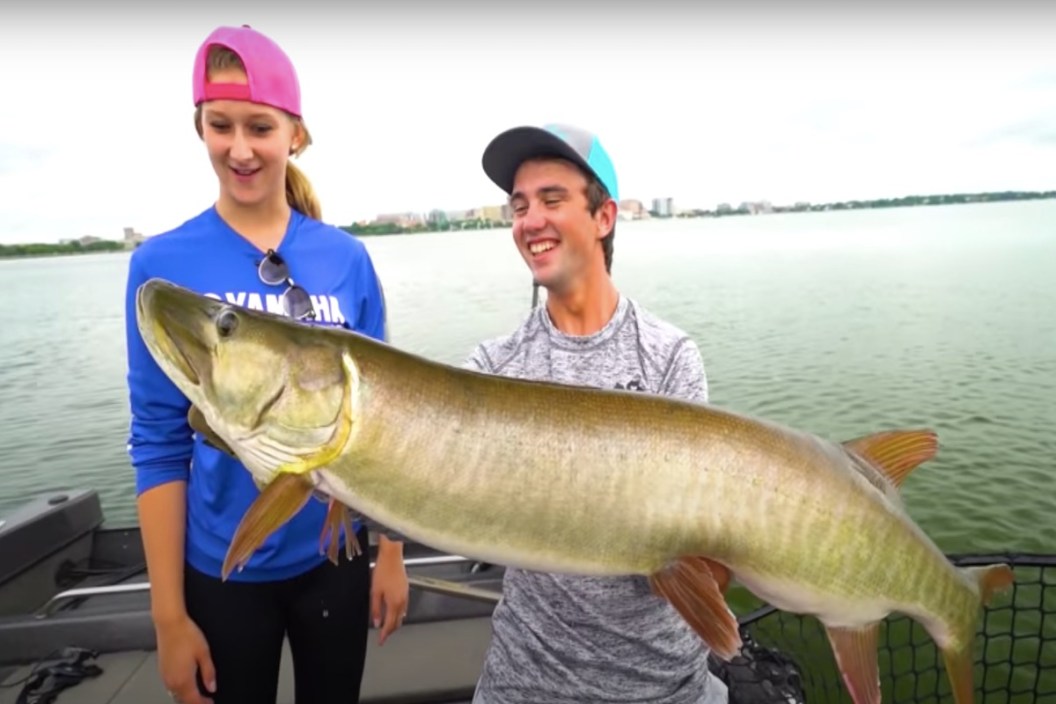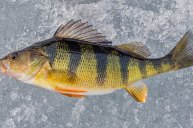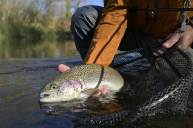When it comes to the muskellunge, what do we really know?
If you ask anyone who's been chasing muskellunge long enough, they might just change that number to 10,000. And yet there are those who make a living putting these amazing freshwater predatory fish in the boat for their clients.
Whichever end of the muskie fishing spectrum you live on, they are altogether one of the most mysterious and desired targets for anglers anywhere. Like their cousins, the northern pike, muskellunge are territorial, aggressive, and can grow to huge sizes making them one of the longest living freshwater fish species at around 30 years.
While muskellunge are considered a non-migratory species, some fish will travel a distance to get to their preferred spawning grounds. Currently, muskellunge are primarily a recreational ?sh species within the United States and Canada, but in the 1800s they were also an important commercial ?sh species all around their native range.
Native Range
They exist from the fabled St. Lawrence River to the Niagara River and the Great Lakes, as well as in the Mississippi River basin. In Canada, they exist from Quebec to southeastern Manitoba, whereas in the United States, you'll find them as far west as Iowa and Nebraska.
In parts of Ohio and Tennessee, indigenous populations of muskellunge are protected.
The Esox masquinongy is better suited to live in the northern climate, but exists and thrives in some Midwest and southern states. In states such as New York, Pennsylvania, Wisconsin and Minnesota populations are quite healthy (with a few provisos) and active.
Breeding/Life History
Muskies are a member of the pike family and prefer to start their spawning in shallow bays and marshes just as soon as the ice is gone. Females drop their eggs in and around vegetation, which the male fertilizes, then hatching follows in about 14 days.
It's not long before juvenile muskies begin to prey on zooplankton and other invertebrates. Depending on water temperature and available food sources, muskies can grow rather quickly in their first three years of life. Females generally grow faster and larger than males, some growing over 50 inches long and weighing over 50 pounds.
Similar to pike, muskellunge will begin to feed on any number of various minnow species, such as gizzard shad, sucker and freshwater buffalo. Muskellunge are nefarious for attacking mammals like baby beavers, muskrats, ducklings, squirrels or other creatures that blunder into the water. Adult muskies will feed on other elongated species such as pike, walleye, yellow perch and even other muskies.
Habitat
Muskellunge inhabit the more clear, vegetated lakes, as well as both streams and larger rivers. Muskies love to ambush their prey near weedlines adjacent to deeper water and patrol gravel areas that have some weed cover.
Muskellunge may live in very deep water during the summer months, particularly on the St. Lawrence River. Brush piles and larger weed mats along with lily pads, reeds and bullrushes can occupy the time of this fierce hunter.
Many muskies will hunt deep open water ledges by silently stalking the water column in wait for unsuspecting prey.
Muskie Stocking
Most states with muskellunge populations have some form of stocking program. In New York, for example, several notable lakes and rivers are stocked with muskellunge from hatchery reared fry. These include Chautauqua Lake, Bear Lake, Findley Lake, the Cassadaga Lakes, Waneta Lake, Allegany River and Conewango Creek.
When naturally occurring muskellunge and northern pike interbreed, they produce a sterile hybrid called the tiger muskellunge, (also known as the norlunge) but they are also reared in hatcheries and stocked as another game fish.
Muskellunge populations are managed through habitat protection, research and monitoring, stocking, and enforced fishing regulations. Hatcheries are used to supplement and maintain fisheries where natural reproduction may be lacking.
The Top Predator
As young muskellunge grow, they thrive on prey such as small fish, working their way up to sunfish, bass and even pickerel. Their lower jaw is full of incredibly sharp teeth and the upper half is no safer. Fishermen need to be aware that these fish can and will inflict some awful wounds to the hands that have hooked them.
Great Lakes muskellunge are some of the most fierce freshwater fish species around and one of the most aggressive.
The easiest way to differentiate muskie from pike, though, is by looking at the tail. Both species have forked tails, but Muskie have much more pointed forks, while Pike tails are more rounded.
Muskie, like pike, are known to be even aggressive towards humans, and in some rare cases have inflicted bite wounds on them. These cool-water fish are legendary in the fishing community and a feather in the cap for those lucky enough to boat one.
Products featured on Wide Open Spaces are independently selected by our editors. However, when you buy something through our links, we may earn a commission.
Looking for a new way to display those antler sheds? Go to Rack Hub and use the coupon code Craiger. Be sure to follow my webpage, or on Facebook and YouTube.
NEXT: MUSKIE BAIT: WISCONSIN LAD GETS 16 STITCHES FROM MUSKELLUNGE BITE





